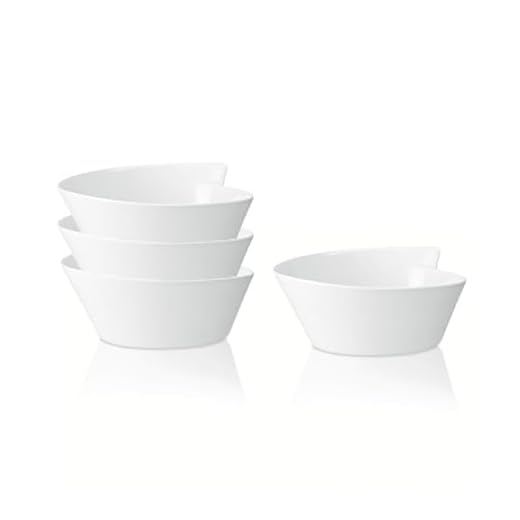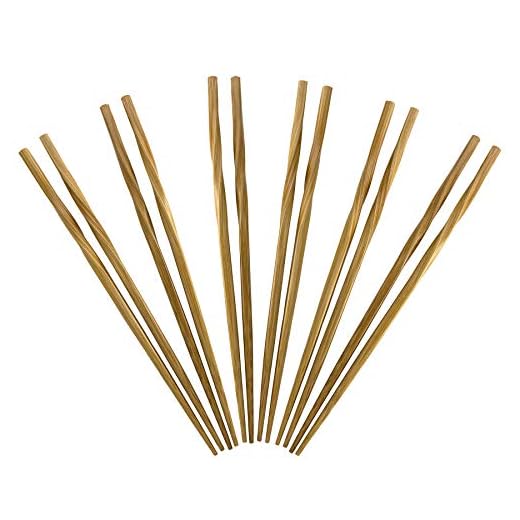




When it comes to culinary traditions, each culture has its own unique customs and tools for enjoying food. In Western countries, it is common to find people eating rice with a fork instead of chopsticks, which are commonly used in many Asian countries. This difference in eating utensils can often be attributed to cultural preferences and historical influences.
One reason why Westerners eat rice with a fork is the influence of European culinary traditions. Forks have been a prominent utensil in European cuisine for centuries, and this influence has carried over to Western culture as a whole. Forks were introduced to Europe in the Middle Ages and quickly became a popular tool for eating. In contrast, chopsticks have been used in Asian countries for thousands of years.
Additionally, the texture and consistency of rice in Western cuisine may also contribute to the preference for using a fork. In Western dishes, rice is often prepared in a way that makes it less sticky and clumpy compared to traditional Asian rice. This allows for easier manipulation and separation of individual grains using a fork. Chopsticks, on the other hand, are better suited for picking up sticky and clumpy rice.
Furthermore, the use of forks in Western culture also aligns with the broader societal emphasis on individualism and independence. Forks allow for a more individualized eating experience, as each person can easily control the amount of food they pick up and consume. Chopsticks, on the other hand, are often used for shared meals, where multiple people eat from a communal dish.
In conclusion, the choice to eat rice with a fork in Western cultures is influenced by a combination of historical, cultural, and practical factors. While different cultures may have different utensils for enjoying rice, it is important to appreciate and respect the diverse ways in which people around the world choose to enjoy their food.
Why Westerners Prefer Eating Rice with a Fork: Historical and Cultural Reasons
In Western cultures, the use of a fork as the preferred utensil for eating rice can be attributed to both historical and cultural reasons. While many Eastern cultures traditionally use chopsticks or spoons to eat rice, the fork has become the utensil of choice for Westerners. Several factors contribute to this preference.
- Historical Influence: The fork has a long history in Western cuisine, dating back to ancient times. It was used in medieval Europe, particularly in Italy, as a tool to better handle food. Over time, the use of the fork spread across Europe and eventually made its way to the Americas. This established history of using forks likely influenced Westerners’ preference for eating rice with a fork.
- Cultural Norms: Western cultures have developed unique dining customs and etiquette that often involve the use of a fork as the primary utensil. From a young age, children in Western societies are taught proper table manners, including how to use a fork effectively. As a result, using a fork to eat rice is seen as a natural and socially acceptable practice.
- Familiarity and Convenience: For many Westerners, using a fork to eat rice is simply a matter of convenience and personal preference. Forks are readily available in most Western households and restaurants, making them an easy and familiar choice. Additionally, the use of a fork allows Westerners to easily pick up smaller grains of rice, ensuring a more efficient and enjoyable eating experience.
- Adaptation to Western Dishes: Western cuisine often incorporates rice into various dishes, such as stir-fries, casseroles, and salads. Using a fork to eat rice in these dishes allows for better integration with other ingredients and flavors, creating a more cohesive and balanced meal.
In conclusion, the preference for using a fork to eat rice in Western cultures can be attributed to a combination of historical influences, cultural norms, familiarity and convenience, and adaptation to Western dishes. While other utensils may be used for eating rice in different parts of the world, the fork has become an integral part of Western dining traditions.
The Evolution of Rice Consumption in the West
Rice has been a staple food in many cultures for thousands of years, but its consumption in the Western world has undergone significant changes throughout history. While it is true that eating rice with a fork is a common practice among Westerners today, this was not always the case.
During the medieval period in Europe, rice was considered a luxury food and was primarily consumed by the upper classes. It was often imported from Asia and the Middle East and was served as a side dish or used in recipes such as rice pudding. However, the consumption of rice was limited due to its high cost and the difficulties of growing it in the European climate.
It was not until the Age of Exploration in the 15th and 16th centuries that rice started to become more widely available in the West. European explorers and traders brought back rice from their voyages to Asia and the Americas, introducing it to new regions and cultures. As a result, rice began to be cultivated in various European countries, including Italy, Spain, and Portugal.
With the increased availability of rice, its consumption in the West gradually expanded. The introduction of new cooking techniques and recipes led to the development of dishes such as risotto in Italy and paella in Spain. These dishes became popular and helped to establish rice as a more common ingredient in Western cuisine.
As the centuries passed, rice became increasingly integrated into Western diets. It was no longer seen as a luxury item but instead as a staple food that could be easily grown and stored. By the 19th century, rice had become a common dietary component in many Western countries.
As rice consumption increased, so did the need for suitable utensils to eat it. Forks, which were gradually adopted in the West during the Middle Ages, became the dominant utensil for eating rice. Their small prongs allowed for easy picking up of individual grains, making them a practical choice for enjoying this versatile grain.
Today, eating rice with a fork is a widespread practice among Westerners. It has become ingrained in Western dining traditions and is seen as a natural pairing. However, it is important to note that there are still regional variations in rice consumption habits within the Western world, with some cultures preferring to eat rice with spoons or chopsticks.
The evolution of rice consumption in the West reflects the changing attitudes towards this once exotic food. From being a luxury item consumed by the elite to becoming a common dietary staple, rice has found its place in Western cuisine and continues to be enjoyed by millions of people around the world.
The Influence of Western Cutlery on Rice Eating Habits
Western cutlery has had a significant influence on rice eating habits across the globe. The introduction of forks as a primary utensil for consuming rice in Western cultures has led to a shift in how rice is eaten in these regions.
The Rise of Forks
Before the introduction of forks, rice was traditionally eaten using hands or chopsticks in many Eastern cultures. However, with the rise of globalization and the spread of Western influence, forks have become increasingly popular as a utensil for eating rice.
The use of forks offers several advantages when eating rice. First, forks provide a more convenient and efficient way of lifting rice from the plate or bowl. This allows for easier manipulation of the grains, as well as the ability to mix rice with other ingredients or sauces.
In addition, forks provide better control and precision when piercing through the rice, ensuring that each bite contains a balanced blend of flavors and textures. Forks also allow for easier consumption of rice dishes that incorporate other ingredients, such as vegetables, meats, or sauces.
The Impact on Rice Eating Habits
This shift towards using forks to eat rice has not only influenced Western cultures but has also had a ripple effect on other parts of the world. With the increasing popularity of Western cuisine and dining practices, the use of forks as a primary utensil for rice has become more common in many countries.
Furthermore, the influence of Western cutlery has led to changes in the presentation and preparation of rice dishes. In order to accommodate the use of forks, rice is often cooked to a slightly drier texture in Western-style restaurants, making it easier to pick up individual grains with a fork.
| Country | Rice Eating Habits |
|---|---|
| United States | Consuming rice with forks is the norm, especially for dishes like rice pilaf or stir-fried rice. |
| United Kingdom | Forks are commonly used to eat rice, especially in Indian and Chinese cuisine. |
| Australia | Rice is often eaten with a fork, particularly in dishes like fried rice or sushi. |
In conclusion, the influence of Western cutlery, specifically the fork, has greatly impacted rice eating habits across the globe. The convenience and precision offered by forks have made them a preferred choice for consuming rice in both Western and non-Western cultures. Furthermore, this influence has led to changes in the way rice is prepared and presented, adapting to the use of forks as the primary utensil for rice consumption.
Western Perception of Eating Rice with a Fork
In Western cultures, the use of a fork to eat rice is quite common and often seen as the norm. This perception stems from a variety of factors, including historical, cultural, and practical considerations.
Historically, the use of forks in Western societies can be traced back to the medieval times. Forks were initially used by the upper classes as a utensil to convey food from the plate to the mouth, as hands were considered unclean. Over time, the use of forks became more widespread and culturally ingrained, leading to their adoption in various culinary practices.
From a cultural perspective, the use of a fork to eat rice is seen as a reflection of Western dining etiquette and table manners. Western food culture places a strong emphasis on individual portions, with each person having a separate plate or bowl of food. Forks are typically used to stab or scoop up food, allowing for precise control of portion size and a more refined dining experience.
Practical considerations also play a role in the Western perception of eating rice with a fork. Forks are generally regarded as versatile utensils that can be used to eat a wide range of foods, not just rice. This versatility makes them popular choices for individuals who seek practicality and convenience in their everyday lives. Additionally, forks are relatively easy to use and require minimal skill or technique, making them accessible to people of all ages and backgrounds.
It is worth noting that while forks are commonly used to eat rice in Western cultures, other utensils such as spoons or chopsticks may also be used depending on the specific dish or personal preference. Ultimately, the perception of using a fork to eat rice reflects the cultural norms and preferences of Western societies, which have evolved over time to prioritize convenience, individual portions, and refined dining experiences.
Cultural Differences in Dining Etiquette and Rice Consumption
When it comes to dining etiquette and rice consumption, there are significant cultural differences between the Western and Eastern world. These differences can be observed in the utensils used, the way rice is eaten, and the social norms surrounding dining.
In Western cultures, such as those in Europe and North America, it is common to use a fork as the primary utensil for eating rice. This is mainly because forks have been traditionally used for a variety of foods, including rice. Forks offer convenience and ease of use, allowing individuals to spear pieces of rice and bring them to their mouths.
In contrast, Eastern cultures, particularly in East Asia, have different dining customs and utensils for eating rice. Chopsticks are the primary utensil used for eating rice in countries like China, Japan, and Korea. The use of chopsticks requires skill and dexterity, and it is considered a mark of refinement to be able to use chopsticks proficiently.
Moreover, rice is often regarded as a staple food in many Eastern cultures and is therefore eaten with other dishes as part of a meal. In these cultures, it is common to have a variety of dishes served alongside rice, such as vegetables, meats, and soups. The rice is used as a base to mix with the other dishes, creating a balanced and harmonious combination of flavors.
On the other hand, in Western cultures, rice is often served as a side dish or as an accompaniment to a main meal. It is typically prepared in a separate manner, such as boiling or steaming, and is served alongside other dishes. The rice is eaten separately from the other foods on the plate, with the fork being used to scoop up small portions of rice.
These cultural differences in dining etiquette and rice consumption reflect the diverse traditions and values of different societies. While Westerners may use forks to eat rice for practicality, Easterners cherish the art of using chopsticks and view rice as a central part of their culinary traditions. These contrasting customs highlight the rich tapestry of global dining practices and the importance of understanding cultural differences.









